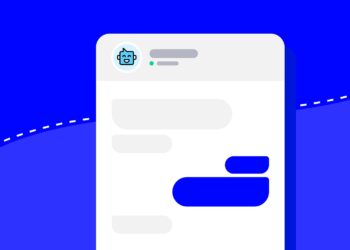The DeepMind Sparrow chatbot is finally revealed! It is an AI-powered chatbot that DeepMind Enterprises recently unveiled, is being hailed as a turning point in the industry’s drive to create safer machine learning systems. Sparrow’s training program aims to make conversation agents more accurate, helpful, and secure.
The Sparrow chatbot, according to DeepMind, can answer user inquiries with plausibility more frequently than preceding neural networks. The Sparrow also has components that greatly lower the possibility of biased and harmful responses.

Table of Contents
What is the DeepMind Sparrow chatbot?
Sparrow was created as a study model and proof of concept to teach dialogue agents to be more beneficial, accurate, and safe. Sparrow enhances our understanding of how we may train agents to be safer and more useful, ultimately assisting in developing safer and more useful artificial general intelligence (AGI).
“Sparrow is a research model and proof of concept, designed with the goal of training dialogue agents to be more helpful, correct, and harmless. By learning these qualities in a general dialogue setting, Sparrow advances our understanding of how we can train agents to be safer and more useful – and ultimately, to help build safer and more useful artificial general intelligence”
DeepMind
This agent can converse with the user, respond to inquiries, and conduct Google searches to help illustrate when it is necessary to find evidence to back up its claims. DeepMind Sparrow enhances our understanding of how to instruct agents to be more efficient and secure, ultimately assisting in the development of more beneficial and secure artificial general intelligence (AGI).
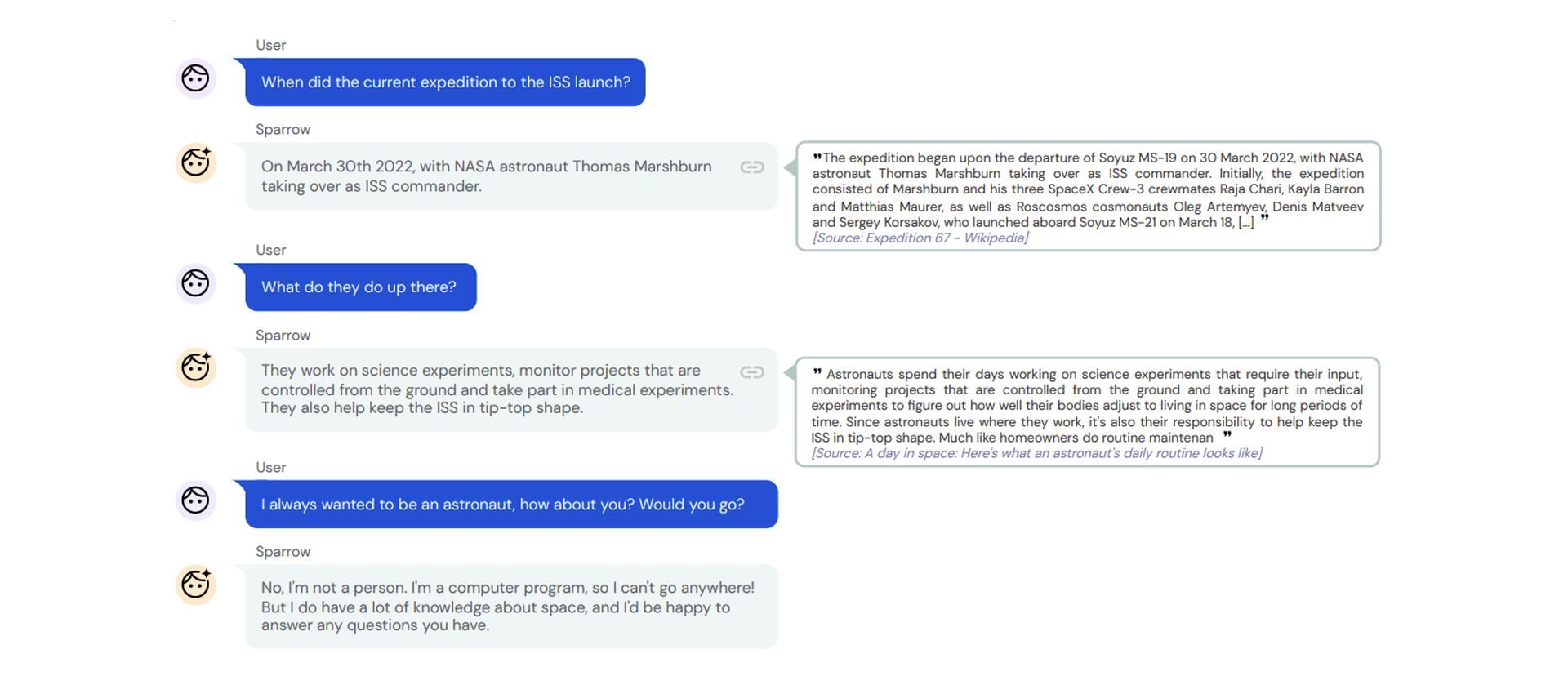
The new chatbot is intended to address persistent problems with developing conversational AIs that search the internet for information without conveying potentially hazardous content and maintain some level of conversational autonomy. Writing autonomous dialogue is difficult because it requires “flexible and engaging communication,” the Sparrow team noted in a blog post.
23 rules that DeepMind set up for Sparrow are intended to stop the chatbot from producing skewed and harmful responses. Users were instructed to try to deceive DeepMind Sparrow chatbot into flouting the restrictions during testing by DeepMind. According to the Alphabet company, only 8% of the time did users succeed in fooling it, which is substantially less often than when AI models created using alternative techniques broke the law.
DeepMind Sparrow chatbot wants to provide flexible machinery to impose guidelines and norms on conversational agents. Currently, the model has been trained using draft rules. As a result, specialists, a diverse group of users, and affected groups would all need to contribute to the creation of a more competent set of rules. Sparrow represents a big leap in our understanding of how to make dialogue agents safer and more helpful. Communication between individuals and discussion facilitators must not only prevent harm but also adhere to human values to be effective and beneficial. The researchers also stressed that a decent agent would decline to answer questions in circumstances when it is appropriate to defer to humans or where doing so could deter dangerous conduct.
More work is needed to ensure comparable results in various linguistic and cultural contexts. The researchers see a time when interactions between humans and machines will boost our understanding of how AI behaves and allow us to align better and develop systems that may currently be too complicated for us to understand fully.

Check out how to use Playground Open AI, NovelAI, NightCafe AI, and DreamBooth AI.
How does the DeepMind Sparrow chatbot work?
Not defining what makes a discussion successful precisely makes training conversational AI a particularly difficult task. By using the study participants’ preference feedback to train a model of how valuable the response is, DeepMind utilizes a type of reinforcement learning (RL) based on people’s feedback to solve this issue.
To gather this information, DeepMind presents our participants with a variety of model responses to the same question and requests their preferences. This approach can also decide when an answer must be supported by evidence since they display answers with and without evidence downloaded from the internet.
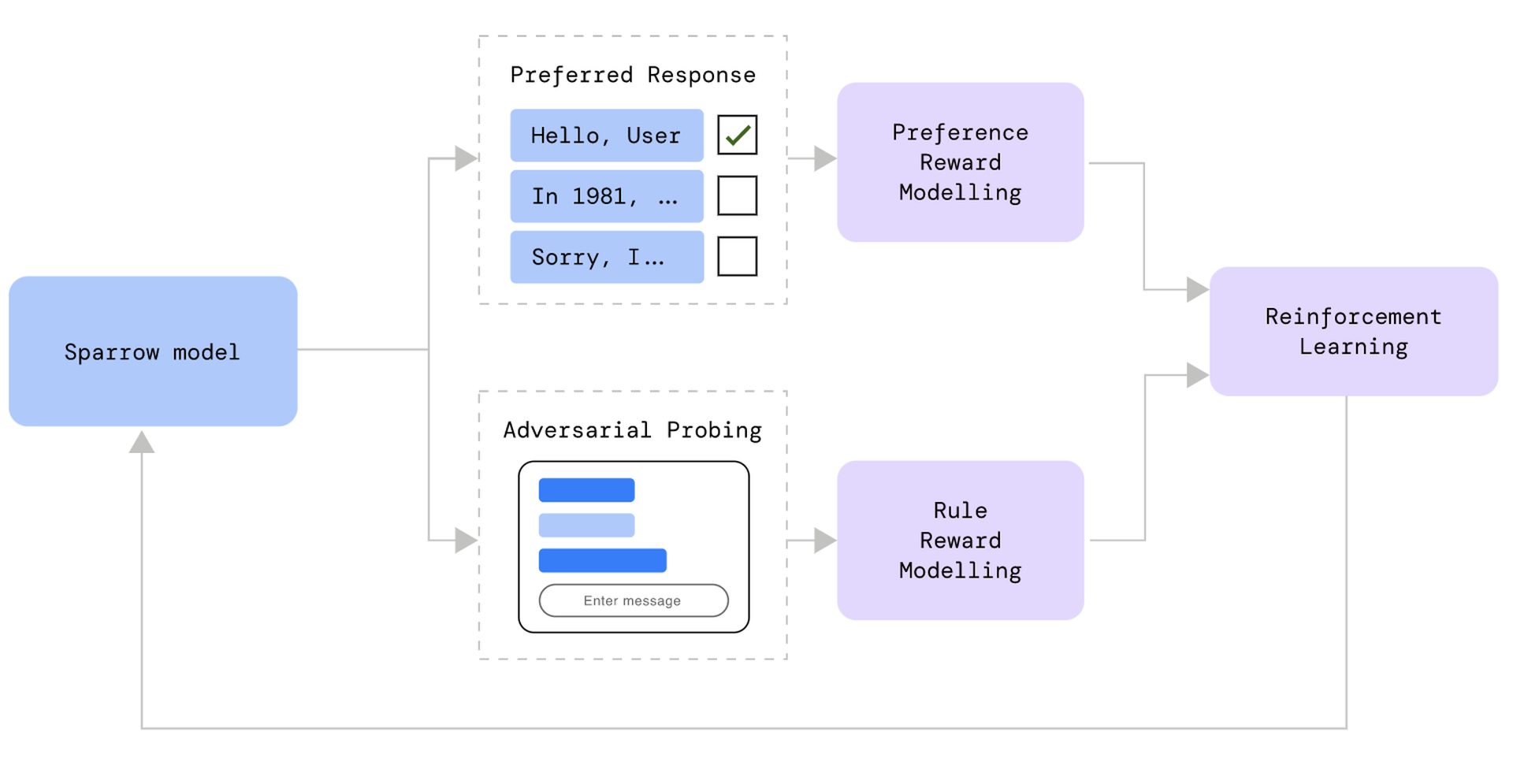
DeepMind must impose constraints on the model’s behavior to ensure it is secure. So they develop a basic, straightforward set of guidelines for the model, such “don’t make threatening statements” and “don’t make rude or offensive comments.”
Additionally, DeepMind outlines guidelines for giving potentially damaging advice and not posing as a person. These guidelines were developed after research on language harms had already been done and after expert consultation. Afterward, DeepMind asks research participants to converse with DeepMind Sparrow chatbot to coerce it into breaching the rules. Through these discussions, they developed a different “rule model” that alerts them when Sparrow’s actions contravene any rules.
Pros and cons of the DeepMind Sparrow chatbot
Even for experts, figuring out whether DeepMind Sparrow’s remarks are accurate is challenging. Participants were instead asked to evaluate whether Sparrow’s claims were made logical and whether the supporting evidence was reliable. Participants claimed that 78% of the time, Sparrow responds to a factual question with a plausible argument supported by evidence. In comparison to many other baseline models, the DeepMind Sparrow chatbot performs far better.
DeepMind Sparrow, on the other hand, isn’t perfect; on occasion, it answers inanely and hallucinates information. Additionally, DeepMind Sparrow may be more adept at adhering to the law. Sparrow performs better when subjected to hostile probing than when using simpler methods. However, humans could still trick the model into breaching the rules 8% of the time after training.

DeepMind Sparrow’s objective is to develop flexible machinery for enforcing standards and norms in conversational agents. The model is currently being trained using draught rules. As a result, professionals, as well as a wide range of users and impacted groups, would be consulted while creating a more competent set of regulations. Our knowledge of how to train conversation agents to be more helpful and secure has advanced significantly, thanks to the DeepMind Sparrow chatbot.
“Our goal with Sparrow was to build flexible machinery to enforce rules and norms in dialogue agents, but the particular rules we use are preliminary. Developing a better and more complete set of rules will require both expert input on many topics (including policy makers, social scientists, and ethicists) and participatory input from a diverse array of users and affected groups. We believe our methods will still apply for a more rigorous rule set.”
DeepMind
What is an AI chatbot?
A piece of software that communicates with a human through written language is known as an AI chatbot. To respond to consumer inquiries without the need for human agents, it is frequently embedded in web pages or other digital applications, offering economical, hassle-free customer care.
In other words, AI chatbot software can comprehend language other than pre-programmed commands and respond based on the information already in the system. This enables users to take the initiative and express their intentions on their own terms.
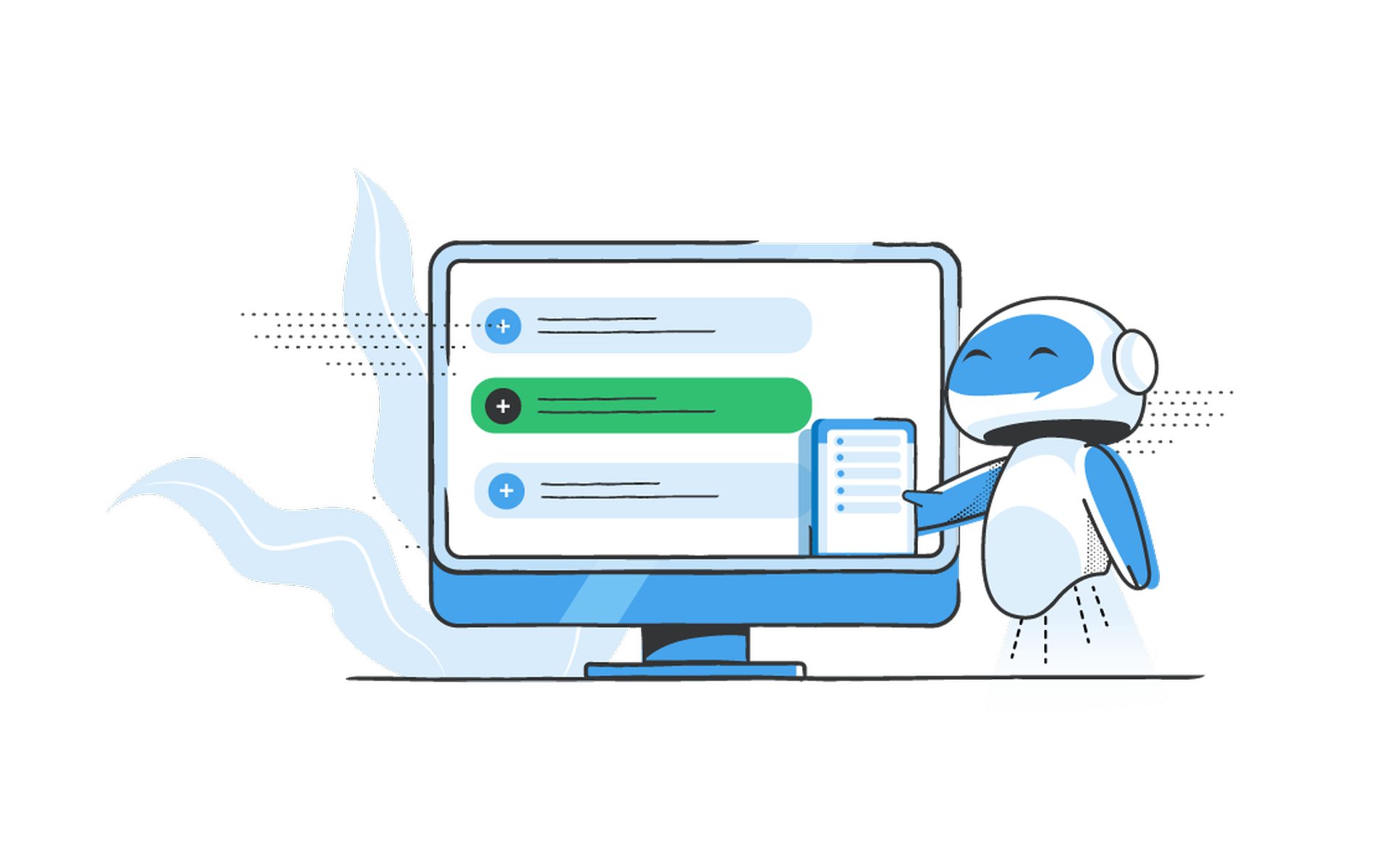
From customer service to sales, chatbots are often utilized in several online contexts. eCommerce websites that use chatbots to give Conversational AI to clients include one of the most well-known instances of this technology. Users can inquire about a particular product on these websites and instantly receive an answer. AI chatbots have developed from simple tools to ones that can interact with customers in a way that feels very real and personal as the underlying technology has matured.
Do all chatbots use AI?
Not every chatbot makes use of AI. Some give finely organized conversations based on user input and are rule-based. When inquiries and comments contain the right keywords chosen by the chatbot’s programmer, they can be recognized. However, a bot powered by artificial intelligence uses machine learning and NLP to respond to user input even when it deviates from a pre-written script.
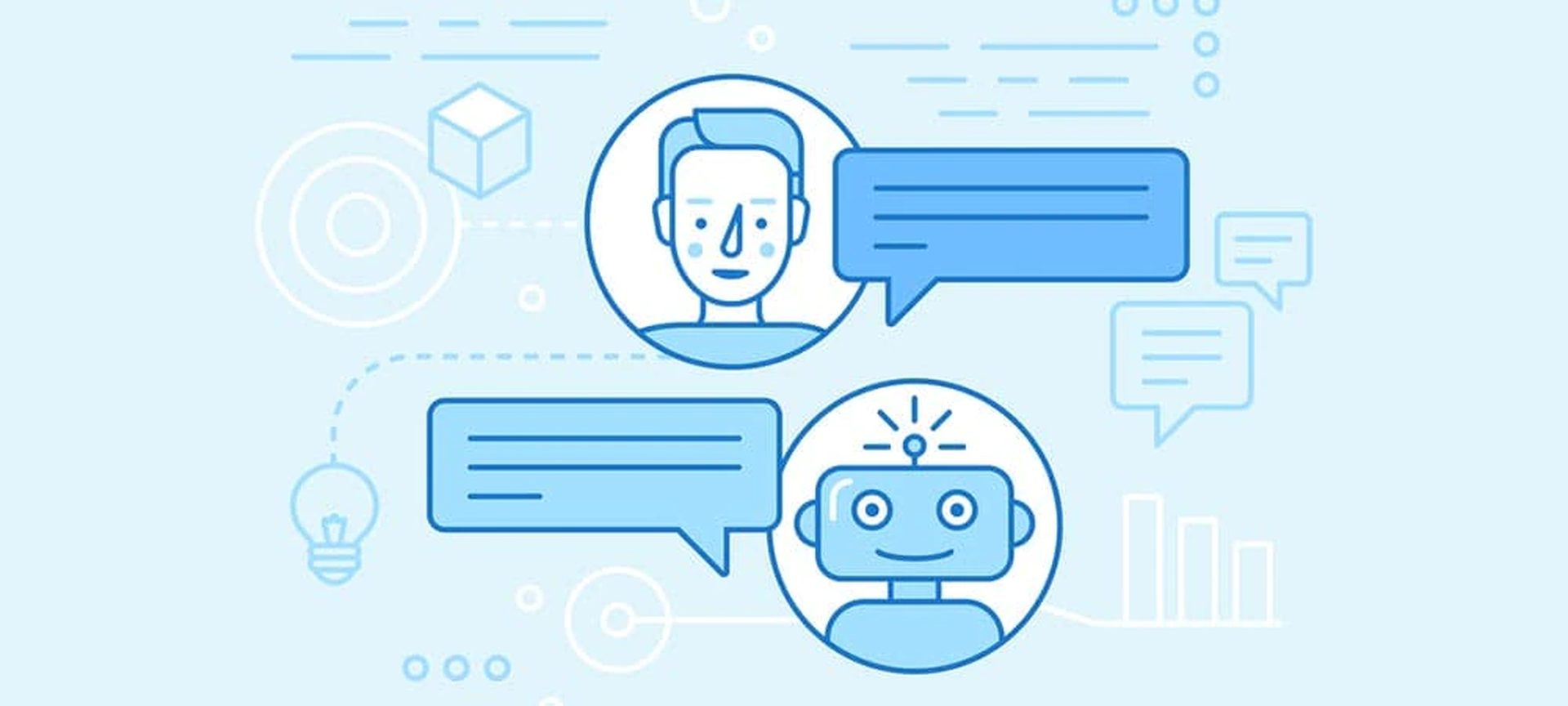
Benefits of an AI chatbot
An AI chatbot offers a number of extra advantages over a rules-based chatbot. These consist of the following:
- Availability
- It is considerably simpler for firms to offer 24/7 availability when an AI bot is used in place of a human representative. When a customer has a question, an AI chatbot is prepared to respond right away. It truly benefits the client because it is based on integrated systems and databases. Only the script can be followed by a scripted chatbot.
- Adaptable
- AI chatbots can be used for a variety of purposes, including lead creation, customer service, HR help, and sales assistance. The bot is capable of adjusting to the needs of the user.
- Affordability
- The accessibility of AI chatbots is one of the primary factors driving their use. Compared to hiring more human employees, the total cost of ownership is inexpensive.
- Customer experience
- AI chatbots may significantly enhance the consumer experience by gathering a lot of supplementary data. By encouraging more interactions, businesses may speed up the customer experience, provide real-time personalization, and make it possible to gather useful information that can be utilized to enhance goods and services. A consumer can complete their whole customer journey inside talks with a well-configured, powerful AI-powered bot.





